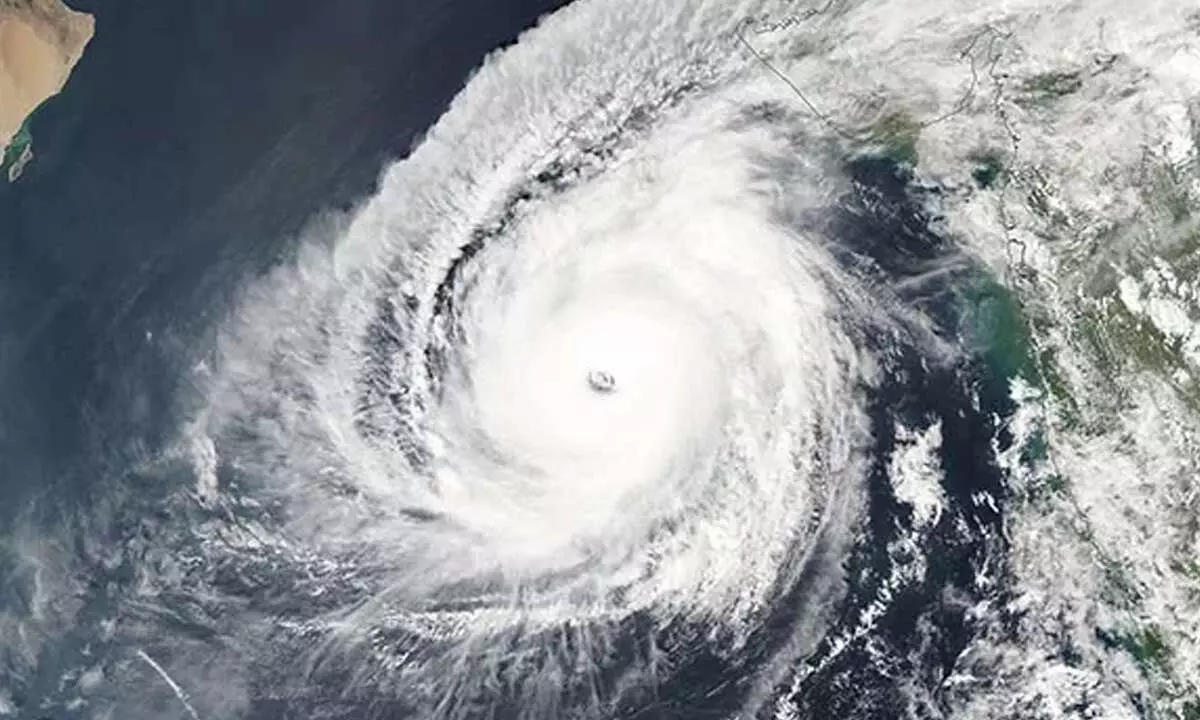Live
- Production begins at Rajhara North Coal Block in Jharkhand, to boost economy
- Gujarat Air Force Association organises annual memorial lecture on national security
- RJD MP urges Nitish Kumar to demand special package for Bihar during Delhi visit
- Indian Navy's training ships undertake professional exchanges in Cambodia
- PM Modi’s advice during ‘Pariksha Pe Charcha’ helped me overcome exam fear: 10th grader Ananya Batham
- Odisha: Key suspect in murder case surrenders in Bhubaneswar
- Gujarat: Man pressures woman for religious conversion in Vadodara
- Additional RPF deployed to facilitate Maha Kumbh devotees: Central Railway after Delhi stampede
- IPL 2025: KKR and RCB to play tournament opener at Eden Gardens on March 22
- Tejas Dhingra retains national championship title at NEC Show Jumping 2024-25
Just In

History of 1998 Cyclone( Representational image)
The deadliest cyclone of the 1998 North Indian Ocean season was first detected on 1 June as an area of low pressure in the Arabian Sea over India’s Laccadive Island
By Science and Society
The deadliest cyclone of the 1998 North Indian Ocean season was first detected on 1 June as an area of low pressure in the Arabian Sea over India’s Laccadive Islands. The system organized into Depression ARB 02 early on 4 June, as determined by the India Meteorological Department. Later that day, the depression strengthened into a deep depression with winds up to 61 km/h (38 mph). It was upgraded into a cyclonic storm the next day, equivalent to a tropical storm on the Saffir-Simpson Hurricane Wind Scale. The small cyclone proceeded to move slowly westward. Strong wind shear caused the cyclone to weaken back to tropical depression strength. After making a turn for the northwest, where wind shear lessened, the depression was able to re-strengthen and reached severe cyclonic storm status by 6 June with winds of 101 km/h (63 mph). Soon after, the cyclone began a northward turn with an accompanied increase in forward speed
1998- Tropical Cyclone ARB 02 (03A)
The deadliest cyclone of the 1998 North Indian Ocean season was first detected on 1 June as an area of low pressure in the Arabian Sea over India’s Laccadive Islands. The system organized into Depression ARB 02 early on 4 June, as determined by the India Meteorological Department. Later that day, the depression strengthened into a deep depression with winds up to 61 km/h (38 mph). It was upgraded into a cyclonic storm the next day, equivalent to a tropical storm on the Saffir-Simpson Hurricane Wind Scale. The small cyclone proceeded to move slowly westward. Strong wind shear caused the cyclone to weaken back to tropical depression strength. After making a turn for the northwest, where wind shear lessened, the depression was able to re-strengthen and reached severe cyclonic storm status by 6 June with winds of 101 km/h (63 mph). Soon after, the cyclone began a northward turn with an accompanied increase in forward speed.
A black and white image of the tropical cyclone
An infared image of Tropical Cyclone ARB 03A taken from a satellite. Source: NOAA
Tropical Cyclone 03A continued to increase in intensity as it moved northward off the western coast of India. The cyclone passed about 552 km (345 mi) west of Bombay on 8 June, reaching an estimated peak intensity of 185 km/h (115 mph). Early on 9 June, the cyclone weakened slightly with 169 km/h (105 mph) winds, but this decline was short lived. Just before striking the Indian coastline, the cyclone intensified to have winds of 193 km/h (120 mph). It made landfall later that day in the Indian state of Gujarat near the city of Porbandar, about halfway between Mumbai, India and Karachi, Pakistan. The 4.9-meter (16-foot) storm surge accompanying the cyclone’s landfall caused great loss of life, mostly to coastal workers. It is estimated that 10,000 people were killed during the cyclone and over 15,000 were displaced. Communication was greatly hindered throughout the impacted region as power transmission towers fell from the cyclone’s high winds. Over 162,000 structures where either destroyed or otherwise damaged, helping to bring the total storm damages to almost $290 million (1998 USD).
Fast Facts:
Most of the dead were coastal salt mine workers and employees at the port of Kandla, India. The salt miners, who work along the coast trapping salt water and setting it up to evaporate in the sun, were killed when the large storm surge came ashore. Unfortunately, these people did not own radios to obtain proper warning of the approaching storm, and as a result, lost their lives.
The India Meteorological Department numbers cyclones by area, with a preceding letter designation correlating to either the Arabian Sea or the Bay of Bengal. Because of the point of origin of this cyclone, the name ARB02 was assigned, indicating that it was the second cyclone to form in the Arabian Sea during that season. The commonly seen name of 03A was assigned to the same storm by the U.S.-based Joint Typhoon Warning Center, which also tracked the cyclone.

© 2025 Hyderabad Media House Limited/The Hans India. All rights reserved. Powered by hocalwire.com







